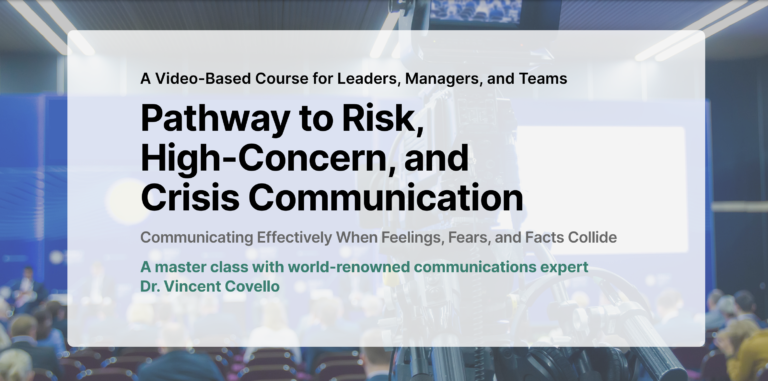Have Any Questions?
1-917-270-5280
Our Working Hours
Mon - Fri 8:00 - 5:00
Achieve true stakeholder sponsorship through an atmosphere of trust and credibility with the Center.
1-917-270-5280
Mon - Fri 8:00 - 5:00

At the helm of the Center for Risk Communication is Dr. Vincent Covello. Dr. Covello is one of the world’s leading experts and practitioners on the practice of risk, high-concern, and crisis communications and is the author of more than 150 articles in scientific journals and the author/editor of more than 20 books.
We encourage you to check out...
A Video-Based Course on Risk, Crisis, and High-Concern Communication from Dr. Vincent Covello

= Read free with Kindle Unlimited!
= Audio book available